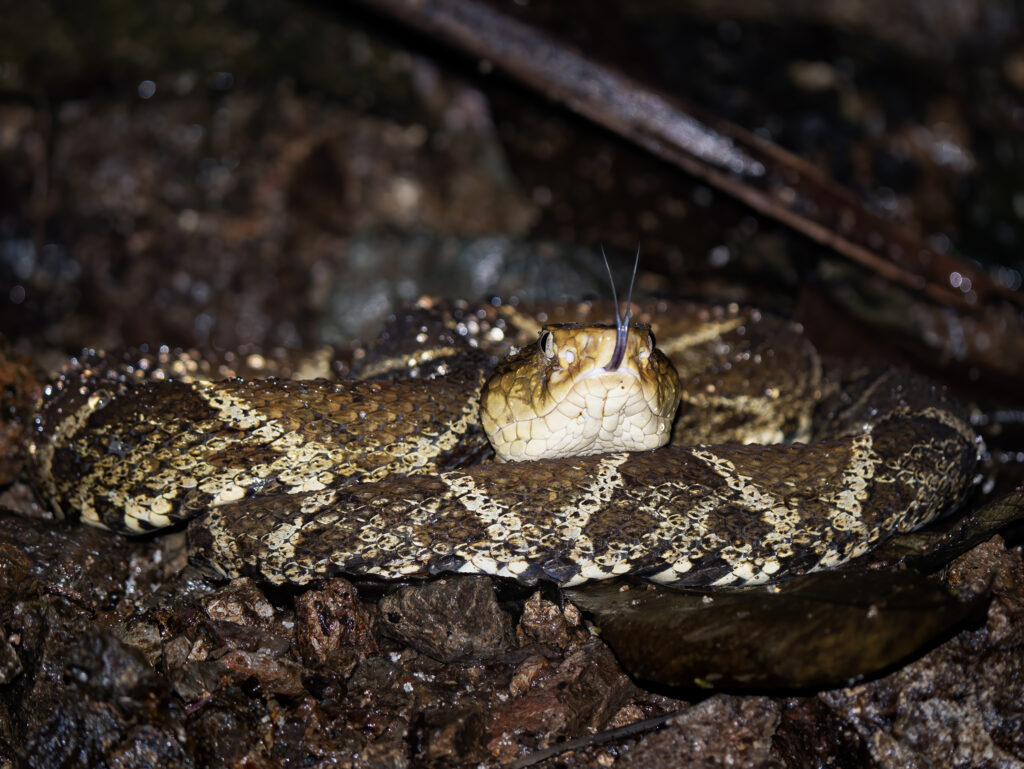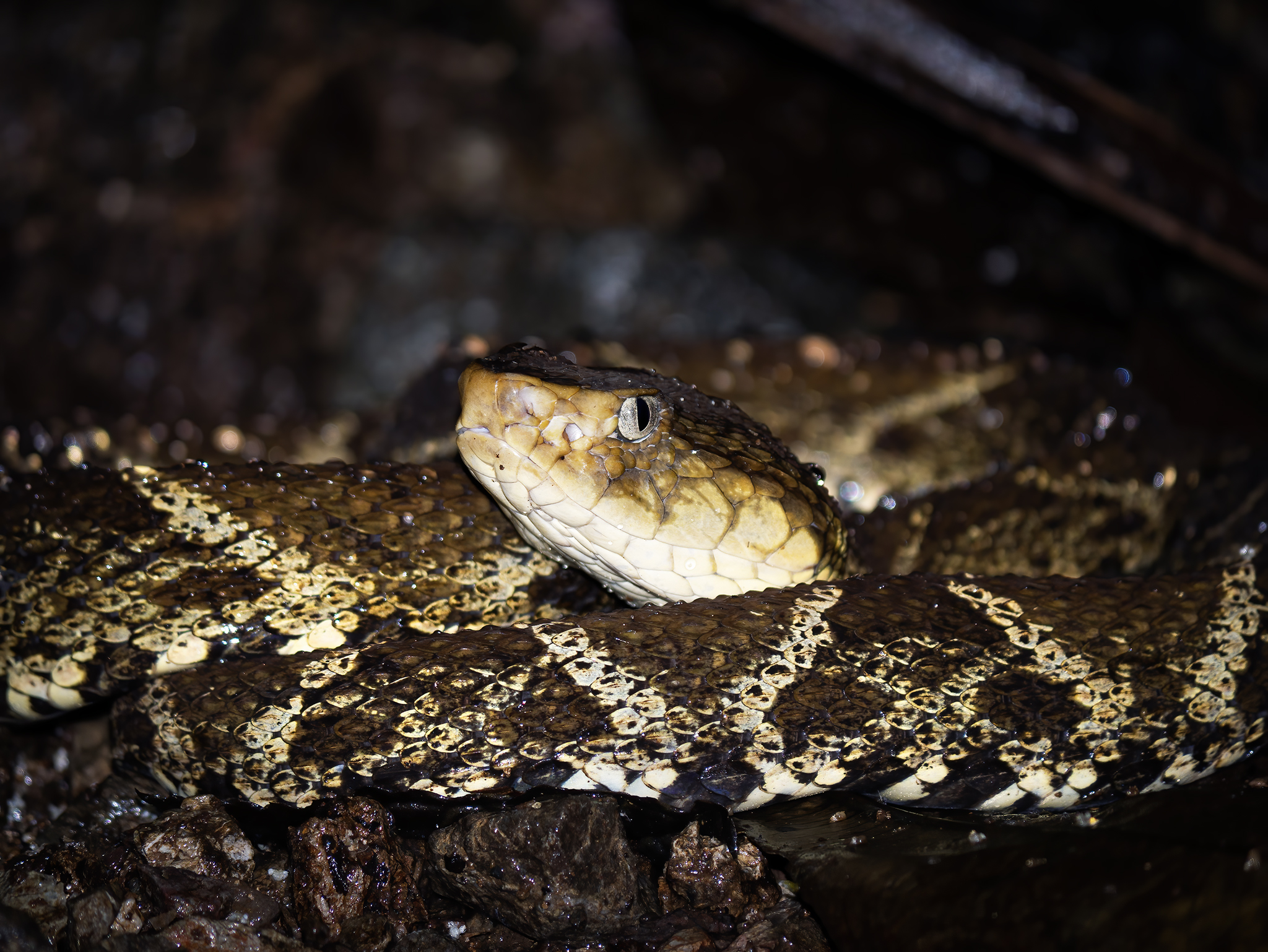FER-DE-LANCE!
This is the infamous Fer-de-Lance, or Terciopelo – one of the snakes I was most desperate to see during my time in Latin America.
This viper can grow up to 2.5m and is the deadliest snake in the Americas, responsible for more than 50% of all snake bites in the areas where they are found. Prior to the development of antivenom, bites from the Fer-de-Lance had a fatality rate of around 10%. However, this has dropped to practically zero in recent years thanks to the incredible work of the Clodomiro Picado Institute – an antivenom research organisation in Costa Rica.
While fatality rates have decreased dramatically, a bite from this snake is still definitely no walk in the park. Their highly hemotoxic venom affects blood coagulation and can lead to necrosis and gangrene. Amputation is not uncommon, particularly if bites occur a long way from a hospital. I met a guy in Colombia who spent five days in the ICU after being bitten by one of these snakes.
Naturally then, it was a truly exhilarating experience to finally encounter a Fer-de-Lance on a night walk on Costa Rica’s Osa Peninsula. The hairs on the back of your neck stand up and your body enters a state of perfect alertness.
However, aside from occasionally flicking its tongue to taste the air and sense where I was, the snake remained almost motionless for around twenty minutes while I took these photos, seemingly aware of its dominance of the situation.
As with any potentially dangerous animal, respect, not fear, is always the correct response. Should you stumble across one of these snakes in Latin America, admire them from a distance of at least twice the length of the snake, and don’t give the snake any reason to perceive you as a threat – it won’t end well for you 😉

–
Fer-de-Lance/Terciopelo (Bothrops asper), Osa Peninsula, Costa Rica


